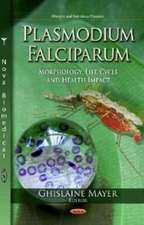Vaccines against Allergies: Current Topics in Microbiology and Immunology, cartea 352
Editat de Rudolf Valenta, Robert L. Coffmanen Limba Engleză Paperback – 25 noi 2013
| Toate formatele și edițiile | Preț | Express |
|---|---|---|
| Paperback (1) | 1088.77 lei 6-8 săpt. | |
| Springer Berlin, Heidelberg – 25 noi 2013 | 1088.77 lei 6-8 săpt. | |
| Hardback (1) | 1093.88 lei 6-8 săpt. | |
| Springer Berlin, Heidelberg – 28 aug 2011 | 1093.88 lei 6-8 săpt. |
Din seria Current Topics in Microbiology and Immunology
-
 Preț: 387.79 lei
Preț: 387.79 lei - 18%
 Preț: 962.03 lei
Preț: 962.03 lei - 5%
 Preț: 1123.13 lei
Preț: 1123.13 lei -
 Preț: 499.76 lei
Preț: 499.76 lei - 5%
 Preț: 319.70 lei
Preț: 319.70 lei - 5%
 Preț: 317.42 lei
Preț: 317.42 lei - 5%
 Preț: 967.79 lei
Preț: 967.79 lei - 18%
 Preț: 1118.62 lei
Preț: 1118.62 lei - 5%
 Preț: 717.00 lei
Preț: 717.00 lei - 5%
 Preț: 712.97 lei
Preț: 712.97 lei - 5%
 Preț: 709.51 lei
Preț: 709.51 lei - 5%
 Preț: 709.51 lei
Preț: 709.51 lei - 5%
 Preț: 721.19 lei
Preț: 721.19 lei - 5%
 Preț: 359.78 lei
Preț: 359.78 lei - 5%
 Preț: 711.88 lei
Preț: 711.88 lei - 5%
 Preț: 774.81 lei
Preț: 774.81 lei - 15%
 Preț: 640.06 lei
Preț: 640.06 lei - 5%
 Preț: 717.00 lei
Preț: 717.00 lei - 5%
 Preț: 360.34 lei
Preț: 360.34 lei - 5%
 Preț: 707.69 lei
Preț: 707.69 lei - 5%
 Preț: 717.56 lei
Preț: 717.56 lei - 5%
 Preț: 716.28 lei
Preț: 716.28 lei - 5%
 Preț: 717.20 lei
Preț: 717.20 lei - 5%
 Preț: 711.32 lei
Preț: 711.32 lei - 5%
 Preț: 711.88 lei
Preț: 711.88 lei - 5%
 Preț: 718.29 lei
Preț: 718.29 lei - 5%
 Preț: 709.51 lei
Preț: 709.51 lei - 5%
 Preț: 369.84 lei
Preț: 369.84 lei - 5%
 Preț: 712.25 lei
Preț: 712.25 lei - 5%
 Preț: 716.45 lei
Preț: 716.45 lei - 5%
 Preț: 706.60 lei
Preț: 706.60 lei - 5%
 Preț: 711.52 lei
Preț: 711.52 lei - 5%
 Preț: 713.54 lei
Preț: 713.54 lei - 5%
 Preț: 720.47 lei
Preț: 720.47 lei - 5%
 Preț: 725.42 lei
Preț: 725.42 lei - 5%
 Preț: 708.06 lei
Preț: 708.06 lei - 5%
 Preț: 713.70 lei
Preț: 713.70 lei - 5%
 Preț: 705.83 lei
Preț: 705.83 lei - 5%
 Preț: 710.96 lei
Preț: 710.96 lei - 5%
 Preț: 723.93 lei
Preț: 723.93 lei - 5%
 Preț: 707.69 lei
Preț: 707.69 lei - 5%
 Preț: 715.35 lei
Preț: 715.35 lei - 5%
 Preț: 709.87 lei
Preț: 709.87 lei - 5%
 Preț: 359.05 lei
Preț: 359.05 lei - 5%
 Preț: 374.20 lei
Preț: 374.20 lei - 15%
 Preț: 635.31 lei
Preț: 635.31 lei - 5%
 Preț: 707.86 lei
Preț: 707.86 lei - 5%
 Preț: 721.96 lei
Preț: 721.96 lei - 15%
 Preț: 632.88 lei
Preț: 632.88 lei
Preț: 1088.77 lei
Preț vechi: 1146.06 lei
-5% Nou
Puncte Express: 1633
Preț estimativ în valută:
208.39€ • 214.76$ • 175.93£
208.39€ • 214.76$ • 175.93£
Carte tipărită la comandă
Livrare economică 01-15 martie
Preluare comenzi: 021 569.72.76
Specificații
ISBN-13: 9783642271007
ISBN-10: 3642271006
Pagini: 196
Ilustrații: XI, 182 p. 20 illus.
Dimensiuni: 155 x 235 x 10 mm
Greutate: 0.28 kg
Ediția:2011
Editura: Springer Berlin, Heidelberg
Colecția Springer
Seria Current Topics in Microbiology and Immunology
Locul publicării:Berlin, Heidelberg, Germany
ISBN-10: 3642271006
Pagini: 196
Ilustrații: XI, 182 p. 20 illus.
Dimensiuni: 155 x 235 x 10 mm
Greutate: 0.28 kg
Ediția:2011
Editura: Springer Berlin, Heidelberg
Colecția Springer
Seria Current Topics in Microbiology and Immunology
Locul publicării:Berlin, Heidelberg, Germany
Public țintă
ResearchCuprins
Preface.- Immunological approaches for tolerance induction in allergy.- Clinical experience with recombinant molecules for allergy vaccination.- Allergen-specific immunotherapy with recombinant allergens.- Vaccine approaches for food allergy.- Induction of allergen-specific tolerance via mucosal routes.- T cell epitope-based allergy vaccines.- Allergen-specific immunotherapy: Towards combination vaccines for allergic and infectious diseases.- Cell-based therapy in allergy.- Subject index.
Textul de pe ultima copertă
The pathomechanisms of allergy are quite well investigated and the disease-causing allergens are characterized in great detail down to their molecular structures. We are thus beginning to see several new strategies for allergen-specific immunotherapy on the horizon, several of which are summarized in this issue. It thus seems that hundred years after the first experimental attempts to “desensitize” hayfever patients we are now capable of developing powerful and rational forms of immunotherapy which hold promise for curing allergy sufferers and eventually may allow real prophylactic vaccination against allergy. It is thus quite possible that allergy may become eradicated similar as certain forms of infectious diseases through vaccination.
Caracteristici
We are celebrating this year the hundred years´ anniversary of allergen-specific immunotherapy. In 1911 Leonard Noon published his seminal work “Prophylactic inoculation against hay fever” describing his attempts to achieve active immunity against “grass pollen toxin” by administering increasing doses of grass pollen extract before the grass pollen season to allergic patients. Although it was unknown at that time that allergy represents an immunological hypersensitivity disease, the treatment was effective and many observations made by Noon remained valid until today. Includes supplementary material: sn.pub/extras











